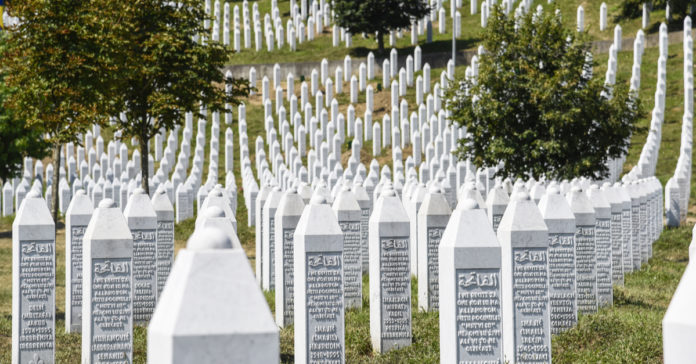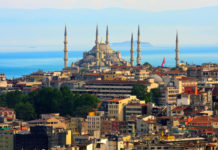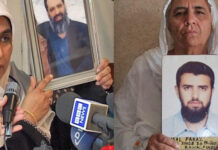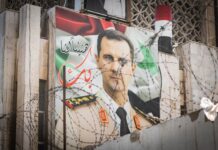Arzu Merali of IHRC reflects on the recent memorialisation of Srebrenica and the loss of its historical context.
People born in the late ‘80s onwards, of course, do not remember.
Who expects them to? Yet, it wouldn’t be unreasonable that the message of this disaster, rather catastrophe, of ginormous proportions, would be passed on by those of us who do.
Yet, all of us, regardless of the 20 year memorial fever currently hitting, at least, the UK, have failed to do just that.
I know, there have been TV programmes and documentaries – I have produced one myself. But it’s been 20 years, with paltry recognition meanwhile of something that should be memorialised, at the very least, as a cautionary reminder.
A reminder that Europe has not learned from the Holocaust. A reminder that the idea of Europe is created by the idea of unity against a heathen Muslim and Jewish “other,” and that it does – it must – repeat its cycle of violence periodically to cleanse its soil of the “undesirable.”
Rusmir Mahmutcehajic, the Bosnian academic and first Deputy Prime Minister of Bosnia called this out repeatedly. After the war he wrote thus:
Subscribe to our newsletter and stay updated on the latest news and updates from around the Muslim world!
“For most people today, the truth about the Holocaust seems to be just a story conceived in rich human imagination, rather than recent European history. In the same way, the truth about Bosnia is already being misunderstood in a sickening way which denies its reality… is it possible, through a relation between the Holocaust and the genocide in Bosnia, and through the predominant understandings of both, to claim that the potential for future atrocities exists at the present time, a potential which may be realised in the future?”
Yet, we have only just come to commemorate. In Cathedrals, with choirs, because it is now understood to be bad. Bad enough to cry and imagine and retell, without context in that recent European history that repeats.
This is how corrupted histories are born. This is how they are fed.
Those old enough to remember
10 years ago I conducted a straw poll amongst family friends about 5 – 10 years younger than I. I had been 24 when Srebrenica happened. Bar one, none knew what Srebrenica was. Given that I had written about it and campaigned (so I thought) for many years on it, this could only be a grotesque failure on my part.
At IHRC, despite almost annual missives and ad hoc reports on Srebrenica, Bosnia, the International Tribunal for the Former Yugoslavia (ICTY) et al, it became clear that this discussion only had purchase amongst those old enough to remember what had happened.
Thus the idea of annual commemoration was born. First stop? To gather support from contemporary organisations in the Muslim community. Those who were old enough, like us, to remember.
Disappointment and distress. Not one wanted to support such an event.
Maybe because of the already extant climate of fear that has put Muslim organisations on the defensive? Who knows? Some minister or other and definitely some putative British neocons had flagged up the idea that anger over the crimes committed in Bosnia, were a deeply rooted cause of so-called radicalisation amongst Muslim youth.
A year later returning from a conference on conflict resolution, I was asked by an academic I was sharing a train journey home with how far this was true. I mentioned that straw poll. “It may affect people my age, but not the youth.”
At least some of those organisations feel safe to commemorate Srebrenica (if nothing else) now.
Remembering and forgetting
We remember the 8000, and forget the rest of the 100,000 slaughtered – or was it 200,000, or more?
Where is our commemoration of the 20,000 women mass raped by Serb soldiers (and maybe some UN officials too). Or is it 50,000[3] or 80,000?
Whatever the numbers, it can’t be denied the damage? Surely? The 6 year old girl whose vocal chords were permanently damaged after night after night or performing forced oral sex acts? The 9 year old, the baby? The women who killed themselves, the women who are the living dead?
If we remember only Srebrenica, what about Ferida Osmanovic? Her name is not amongst the commemorated dead. She hung herself in despair near Tuzla airport after being separated from her husband.
What about the girls who were raped that day, like cousins Mina (aged 12) and Fata (aged 14) Smailovic?
Witnesses reported seeing the two girls return to where they and others had been detained, having been forced outside by Bosnian Serbs dressed in UN uniforms. Both girls covered in blood, Mina is reported to have cried, “We are not girls anymore. Our lives are over. We don’t have a life anymore.”
Later that night Fata hung herself with her own scarf.
And then there were the men and boys. Raped, yes, some. Castrated, perhaps many more. Sexual violence as a weapon of war was at its most seen then – for all the world – yet what do we recall now?
“You will give birth to Chetniks,” women impregnated by mass rapes in the detention centres were often taunted.
“Ethnic cleansing,” as the genocide of Bosnians was prettily renamed by European powers, was not simply some mass expulsion of people from certain lands (half the population of Bosnia – around 2.6 million – were dislocated from their homes.
Genocide
Genocide across Bosnia (because that is what it was), came in many forms.
The burning of books, the confiscating of land and homes, the rapes, the impregnations, the castrations and the murders.
To be dead in Bosnia, did not guarantee even that you were buried. Look at the annual burials in Srebrenica. These are still yet the lucky ones.
Meticulously put together bone by bone, excavated from different mass graves, DNA checked and finally laid to rest, their families get at least a locus to turn to and mourn. Others we know, know only that their brother, mother, father, husband, child was identified by feet found in a wheelbarrow (no other parts remain), or an inscribed wedding ring on an exhumed hand.
Genocide was (is) the myriad ways of extermination that the Serbian nationalist project took – a project that targeted all who stood in its way whether Muslim or not (do you remember Admira Ismić and Boško Brkić?)
It was the setting aflame of Bosnia’s National and University Library in Sarajevo, and the immolation of 90% of its 1.5 million catalogue. On the fateful night in August 1992, when Serb sniper fire set the building ablaze and human chain of librarians and citizens tried to save as many books as possible.
Remember, please, Aida Buturovi, shot down by a sniper doing just that.
And then there was Sarajevo’s Oriental Institute. And then there was Bosnia’s National Museum. Its director Dr. Rizo Sijari, was killed by a grenade blast on 10 December 1993 while trying to arrange for plastic sheeting from UN relief agencies to cover some of the holes in the building created by Serbian shelling and sniper fire. And then Mostar…
History repeats
History repeats, no Europe repeats. It is the Holocaust again, and it is the conquest of Granada in 1492 and the destruction of the Americas that same year. It is erasure of identity so crucial to the Trans-Atlantic Holocaust that is still lived today in the naming of descendants, in the defeated economies of post-colonial states, in the endless compensation of enslavers and the failure to pay reparations to the enslaved.
It is more than just the hatred of the “other,” writ large in every history book the victor writes. Europe – in its many guises – can only do this because it defines itself by what it is not. Do we realise yet, that in our aspiration to be a part thereof, we too become (this) Europe?
Burning books and burning bodies. Sounds familiar?
A lone Bosnian looks at the camera and speaks on behalf of Daesh, addressing, supposedly his Bosnian bretheren. His misguided face runs alongside the 20 year commemoration news pieces on Srebrenica. The implication? Some conveyor belt from Muslim loss in the 1990s and the atrocities committed by Daesh today. Muslims must not be allowed to remember then, because what happens is this.
Except that lone Bosnian Daesh is too young to know firsthand what happened. His historiography, in its all too familiar nationalist perversions is neither vengeance nor justice for Bosnia, but the Serbian nationalist project under another name. The bloody atrocities of Daesh all too readily highlighted, the evidence of its methodological symmetry.
Complicity
There is some consternation now, that the United Kingdom, France and the USA were more than just impotent observers of the carnage in Srebrenica but may have been complicit in it. This is hardly a secret. The declassification of documents simply gave more detail to things known both on the ground and by observers in the run up to the genocide.
We already knew that the US had reconnaissance pictures of what was unfolding and didn’t share them with NATO. We already knew that the French commander of UNPROFOR Bernard Janvier had a recklessly close relationship with the Serbs, credited for his halting airstrikes, even as evidence of what was happening in Srebrenica started to come to light.
Given the many crimes that Dutch UNPROFOR troops are alleged to have been complicit in, nothing should surprise. Their alleged crimes included surrendering all of Srebrenica’s civilians to the Serbs and helping to split the men and boys up from the women (the unit commander Thom Karremans was notoriously photographed sharing a toast of champagne with Bosnian Serb counterpart Ratko Mladic).
Recently declassified documents show that “the UN provided 30,000 litres of petrol, used by the Serbs to drive their quarry to the killing fields and plough their bodies into mass graves.”
We could have guessed that.
Back home in Turkey, Bora tells us one day, about his time as a volunteer fighting in Bosnia. We have been friends a long time, but this is the first I have heard any details (some 20 years after the event).
He remembers finding Hezbollah soldiers in distress after fajr prayers one day as they found out about an Israeli onslaught taking place back home – the same war on two different fronts.
He remembers the Iranians who helped build the tunnel that broke the siege of Sarajevo and paid with their blood like their Malaysian and Pakistani comrades too. There were of course so many others, but these nations contributed perhaps the most after the Bosnians themselves.
And then of course there was the rolling in of Saudi “aid,” once most of the fighting was done. Armed with food convoys and the most pathetic excuses for “dawah,” they leafleted the locals to educate them about the heathen nature of those who had come to fight with and for them.
Bora recalls telling one, “Yes, you are right, I agree, they are all kafir, they are not Muslims, “ before continuing, “But know this, that kafir became shaheed here and here and here to liberate this land. Please continue your ‘dawah’.”
When, after 9-11, we all became too scared to speak of the heroes of Bosnia, we allowed that “dawah” to become the alternative narrative of the war.
Two histories
We are taught then only two histories. Either we remember only the civilian Bosnian men and boys killed in Srebrenica, not the men and women who fought and were martyred. Or we are taught that we must avenge in the way our oppressors tortured, desecrated, raped and humiliated us. Both are Europe, and neither are Islam.
We – those of us who do remember, whether Muslim, Christian, Jew or British, Indian, Bosnian whoever – fail our children again and again by allowing only these world views to exist in their minds.
By all means remember and respect Srebrenica’s dead in Westminster Abbey, the Vatican and wherever else will acknowledge their names. But understand that this is neither enough, nor good enough, because Europe and its minions repeat – in Iraq, Afghanistan, Libya, Syria, in DRC, Pakistan and well beyond. Not to understand that fails to respect the dead. It simply keeps that “potential for future atrocities” alive.
Arzu Merali is a writer and researcher based in London, UK. She is one of the co-founders of Islamic Human Rights Commission.
She is the producer of “Forgotten Genocide,” a documentary directed by Assed Baig for IHRC, released on 13 July 2015. To arrange a screening or of more information, please contact research@ihrc.org or call the IHRC office on +44 20 8904 4222.










![24 Hour Road Trip Through Free Syria [Short Film]](https://5pillarsuk.com/wp-content/uploads/2025/02/IMG_5907-218x150.jpg)











